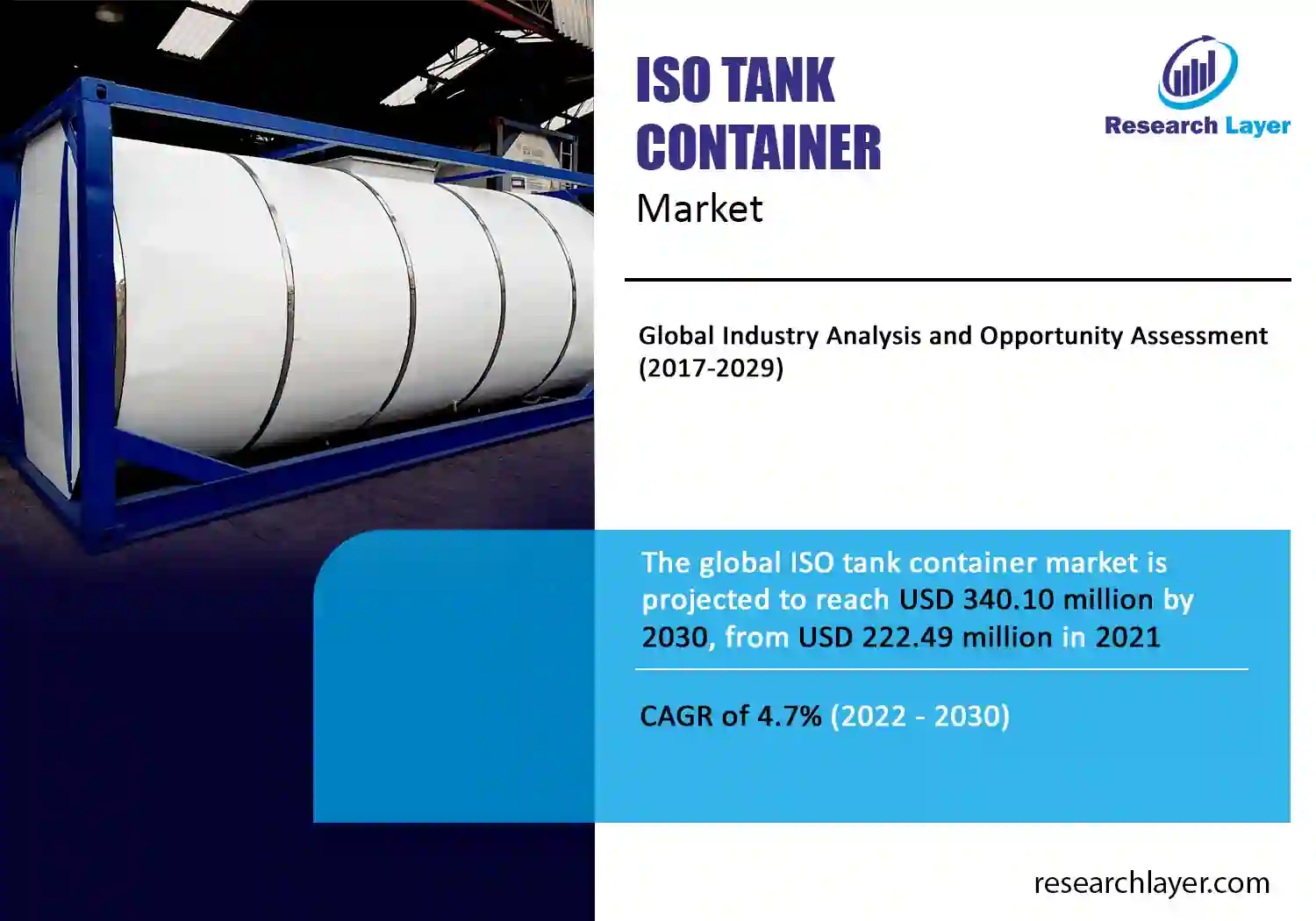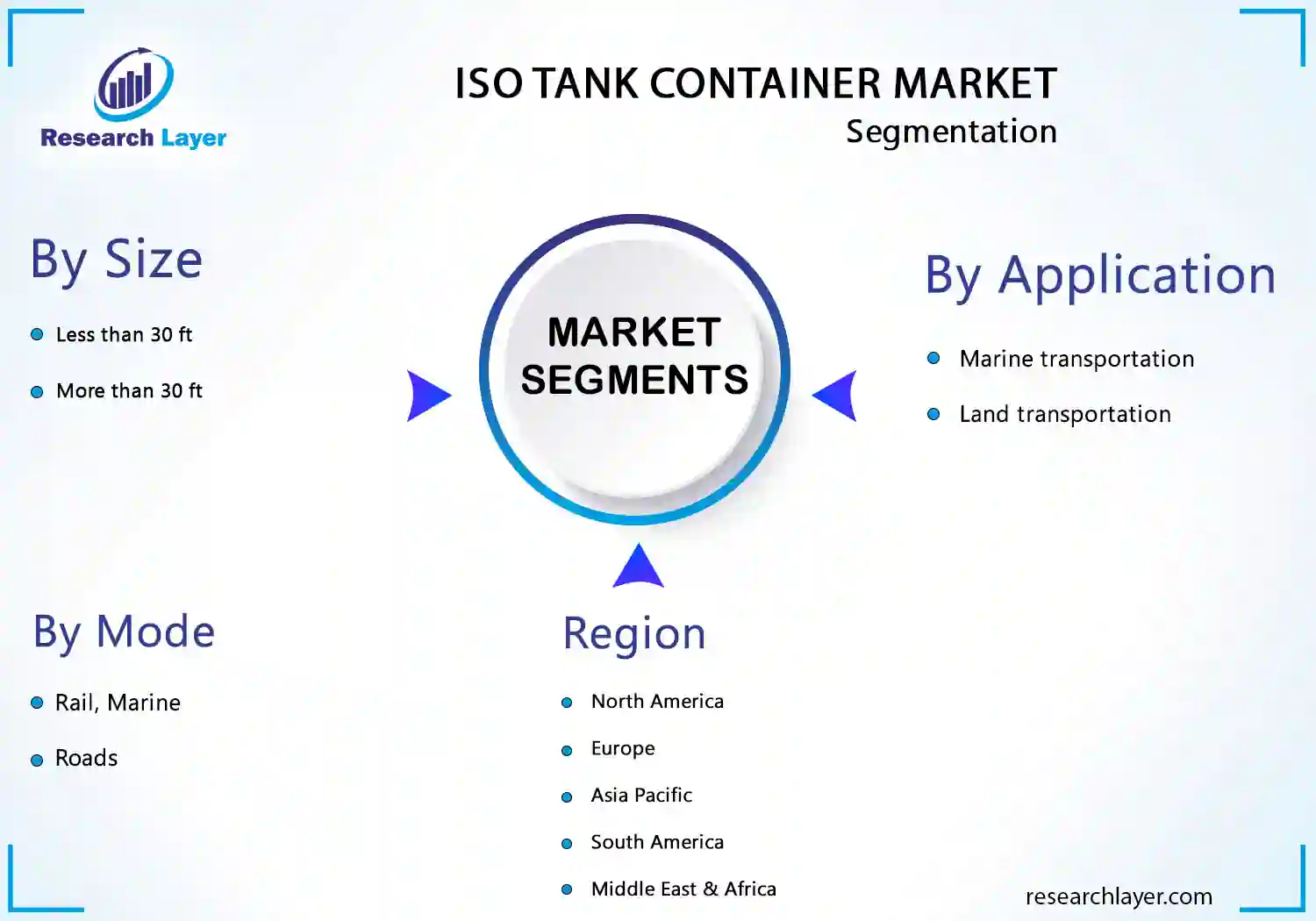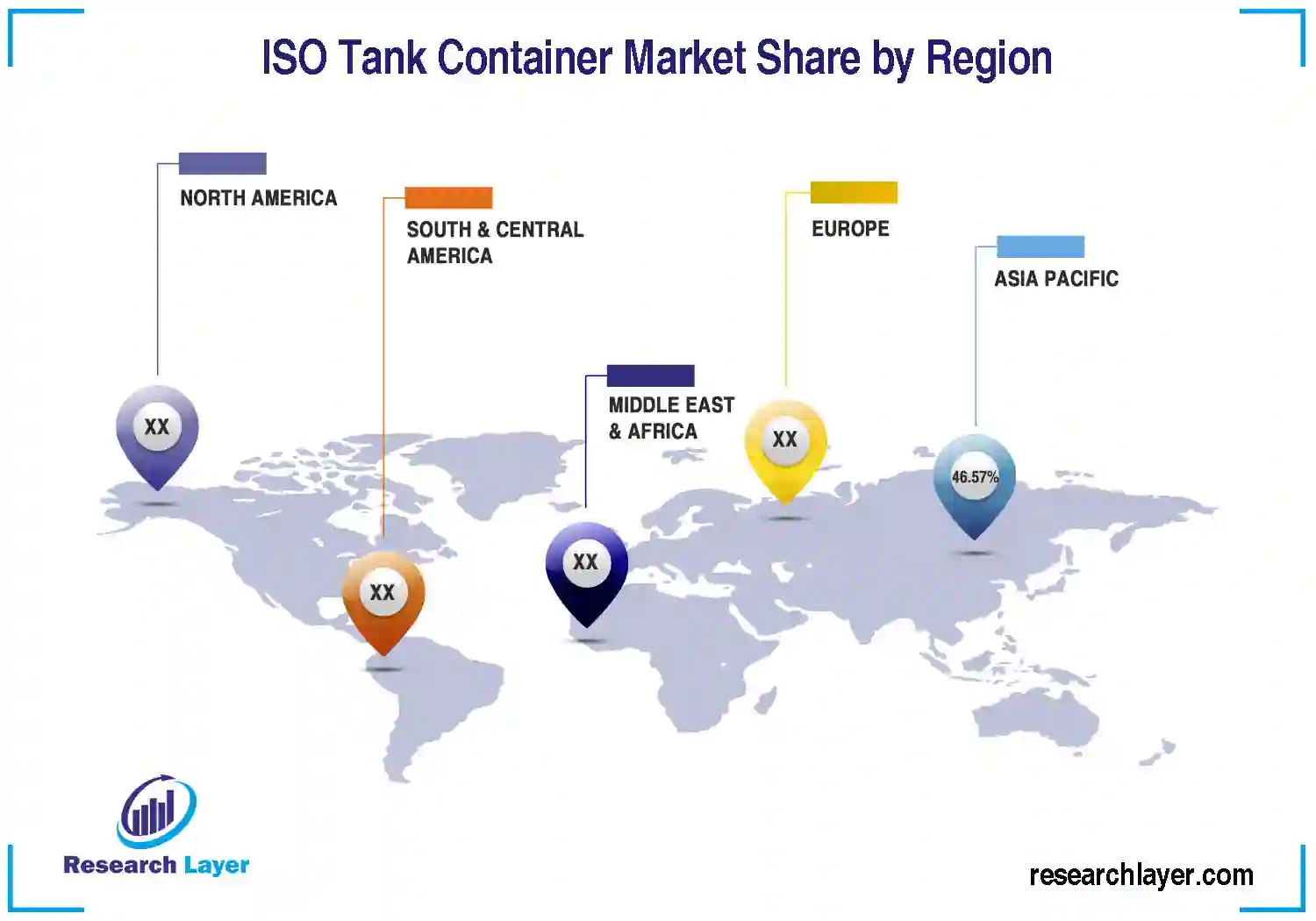 +1 915 229 3004 (U.S.) |
+1 915 229 3004 (U.S.) |  +44 7452 242832 (U.K.)
+44 7452 242832 (U.K.)
 +1 915 229 3004 (U.S.) |
+1 915 229 3004 (U.S.) |  +44 7452 242832 (U.K.)
+44 7452 242832 (U.K.)

The global ISO tank container market is projected to reach USD 340.10 million by 2030, from USD 222.49 million in 2021 and is anticipated to register a CAGR of 4.7% between 2022 and 2030.


Download Free Report Sample to learn more about this report.
· Cutting down capital and operational expenditure by large oil, gas, and chemical companies
· Companies with high leverage and insufficient cash flow are likely to face liquidity crises and some of them may have to shut the business permanently
· Shale producers in the U.S. are likely to experience more damage than other countries because of higher supply and lower prices
· Market players with higher capital flow and at the healthy position are more likely to change the business operation and business model. They are also expected to diversify their investment in the energy sector
· Companies are likely to face severe labor crises when market rebound due to layoffs and furloughs
Market Drivers:
Cost Effective and Ease of Transport
ISO tanks are smaller than shiploads or truckloads of liquid to be packaged. Moreover, it can be easily transported through trucks to the railways, and from trains to shipping yard or deck. In fact, it can be shipped by air due to its convenient size and higher safety. This proves to be effective in saving handling and shipping cost of the ISO containers.
As per ISO guidelines, shipping tanks are expected to be of same size with mechanically well-stable frame around them, method of secure locking, and common connection. This allows material handling devices such as cranes to connect to tanks in instance and swiftly move them from vehicle to vehicle. Moreover, they are stackable. This comes handy especially when intended to be transport through railcars as more than two tanks can be stacked in the railcars, which further save time and transport cost. As a result, more than thousand tons of liquid and gas can be transported without investing much time.
Market Restraints:
Higher Chances of Damage to Long Tank Containers
The shelf-life of the longer tank containers is more likely to get affected if the containers are used for transport of solids. In most of the cases, solid are injected into the containers at higher temperature to make them liquid, which eventually turns into solid as temperature comes to normal. It is heated again at the time of unloading by connected them to ship steam or house team for heating the entire cargo inside the tank.
The procedure can be facilitated by applying pressure of the vessel with air. It compels the viscous substance to come out of the drain. Though effective for some loads, the technique may not be the perfect choice for tanks because it gives stress on the shell itself that can lead to cracks and leaks. In addition to accidents in transit, loading or unloading, changes in temperature and pressure inside the vessel can stress the shell. Moreover, the ISO tanks are likely to suffers from coating chipping or breaking over time. Any exposure of corrosive material to the metal of ISO tanks can significantly hamper the life of the tank.
Market Opportunities:
Start Production of ISO Containers in Lucrative Economies
Currently, more than 85% of the global ISO containers are manufactured in China. The country has strong presence of contain manufacturers due to abundance of raw materials and required skilled labor.
This offers a lucrative opportunity for the market players to expand their production line or production plant in economies having easy availability of raw materials and favorable government policies. For instance, it costs up to 40% extra on the actual price of ISO containers for import from China to other countries. In addition to this, on-going trade war between the U.S. and China and Chin and India have created a lucrative revenue pockets for the ISO containers producers. The market players can advantage of this situation and break the monopoly of China by producing and selling product at lower cost and expand their market reach in cost-sensitive countries, especially in India and other Latin American countries.
|
Operator |
Headquarter |
Fleet |
|
Agmark Logistics |
USA |
1,600 |
|
ATI Freight |
UAE |
2,000 |
|
Alfred Talke |
Germany |
1,200 |
|
Baltica Trans Logistics |
Russia |
1,500 |
|
Bertschi Group |
Switzerland |
25,000 |
|
Bolt |
Singapore |
1,200 |
|
Lessor |
Headquarter |
Fleet |
|
Albatross Tank Leasing |
China |
9,500 |
|
Combipass |
France |
1,500 |
|
CS Leasing |
USA |
15,500 |
|
Eurotainer |
France |
48,500 |
|
EXSIF Worldwide |
USA |
64,000 |


Download Free Report Sample to learn more about this report.
The global market is flooded with numerous sizes of ISO tank containers. However, 20 ft is the most common size used across the globe for the transport of liquid cargo due to its east of transport and transfer from vehicle to vehicle through any mode of transport such as rail, road, marine, and air. Today, the container dimensions have standardized to an international standard size of 20’ long, 8’ wide and 8’6” high – the ISO (International Standards Organization) Frame. Approximately 95% of tank containers are built to 20ft specifications although they are also available as 10ft, 30ft, 40ft and 45ft containers. The ISO frame helps in shipping tank containers with contemporary inter-modal shipping options like trucks, container ships, and rail lines. It gives you a safe and affordable option for moving cargoes to any place.
By mode, the market is broadly segmented into rail, marine, and roads. Road segment is holding lions share of the market, which is followed by rail and marine. Roads has emerged as the key mode of transport for ISO containers for the transport of goods due to a range of factors. Road connects every corner of country and intended products can be loaded on trucks and delivered at the desired location without much difficulties. Apart from this, it become easy for the producers to delivers the products in ISO tanks to desired location due to strong network of road, higher safety, and efficient transportation. The demand for ISO tank containers is also driven for the transport of domestic raw materials such as milk to dairy industry, water, oil and gas in each town and city of the country.
By application, the market is bifurcated into marine transportation and land transportation. Land transport is dominating the global market. Land transportation covers rail and road. The segment is holding the largest share of the market. These modes of transportation are majorly used for domestic transport of chemical, water, milk, alcohol, and oil and gas, among others. In addition, the demand for ISO containers is increasing more rapidly in developing countries due to rapidly growing consumption of various products such as oil and gas. More than 60% population of the world is residing in the Asia Pacific and more than 30% of it is present India and China only. This represents extreme demand for various products such as oil for automotive sector, chemicals for pharmaceutical and related industries, milk for daily and industrial use, among others.
Apart from this, ISO containers are used for transport of intended liquid through trucks to train to sea or airport. Land transportation plays a vital role in the overall global supply chain of goods and vehicle to vehicle transportation.


Download Free Report Sample to learn more about this report.
By region, the global ISO Tank Container market is segmented into Asia Pacific, North America, Europe, Latin America, and Middle East and Africa. Wherein, Asia Pacific is dominating the global market on account of strong presence of manufacturers and users across the region. North America is holding the third largest share of the global ISO tank container market. Wherein, the U.S. has emerged as the largest consumer. The country consumes the containers majorly for transporting all types of water, hydrogen peroxide, sulphuric acid, nitric acid, mining chemicals, food products, solvents, oils, resins, and alcoholic beverages. With the discovery of shell gas, the demand for ISO tank containers has gone up to some extent for the transport of gas and oil. In addition to this, the U.S. has strong presence of healthcare, pharmaceutical, and chemical industry. This drives the demand for the container for the transport of gas, chemical, and alcohol to the manufacturing facilities and end-users. Moreover, the U.S. has the largest chemical industry and it export chemical products on large scale to other countries.
Asia Pacific is holding the dominant position in the global ISO container market. Wherein, China is the largest producer of ISO container. The country produces over 80% of the global production. In the last few years, the global market has seen a declining production in China as India has also started producing the containers to reduce its reliance of Chinese supplier. This is further supported by growing tension between India and China and on-going trade conflict between these two countries. Currently, India has to pay up to 40% extra on the actual price of imported containers due to heavy taxes on the product from both the governments and higher shipping cost.
China, India, Japan, South Korea, Taiwan, Hongkong, and Vietnam are the largest producers of industrial goods, agricultural produce, electronics items, automotive, minerals, metals, and coals, among others. Wherein, India and China are witnessing a significant growth in the industrial output due to strong presence of chemical, pharmaceutical, automotive, and manufacturing companies in the countries. Apart from this, more number of companies are shifting to the region due to abundance of raw material, favorable government regulation in terms of FDI and industrial norms, and cheap labor.
Key Players:
Danteco industries, Meeberg, Tankformator, THIELMANN, Tankcon, Stolt-Nielsen Limited, HOYER, Bertschi AG, Bulkhaul Limited, China International Marine Containers (Group) Ltd., Welfit Ody, and others
The global ISO tank container market is projected to reach USD 340.10 million by 2030, from USD 222.49 million in 2021 and is anticipated to register a CAGR of 4.7% between 2022 and 2030.
The Asia-Pacific region is expected to dominate the global ISO Tank Container Market in 2030
Roads has emerged as the key mode of transport for ISO containers for the transport of goods due to a range of factors.
Land transport is dominating the global market
Danteco industries, Meeberg, Tankformator, THIELMANN, Tankcon, Stolt-Nielsen Limited, HOYER, Bertschi AG, Bulkhaul Limited, China International Marine Containers (Group) Ltd., Welfit Ody, and others


Report Code :
RL6516
Published on :
Nov 2022
Request a Free Sample Report